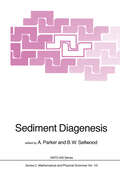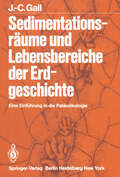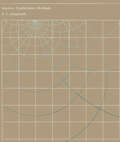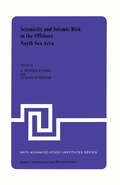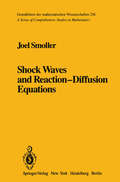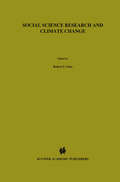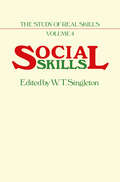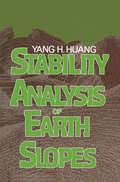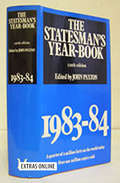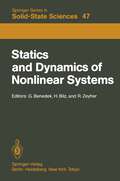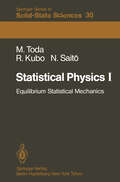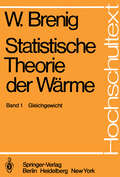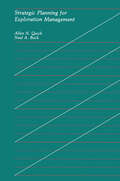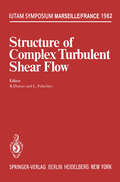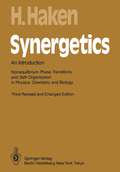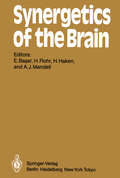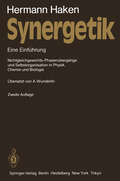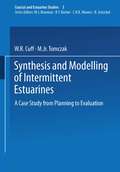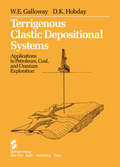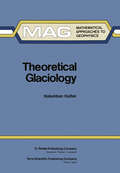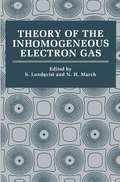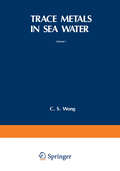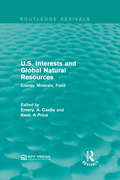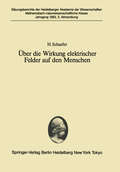- Table View
- List View
Sediment Diagenesis (Nato Science Series C: #115)
by A. Parker B. W. SellwoodThe topic of sediment diagenesis is of fundamental importance to industry in the evaluation of hydrocarbon and water reservoir rocks. Detailed knowledge of the diagenetic textures, fabrics, and minerals, and a prediction of the regional diagenetic response, partly controls hydrocarbon recovery programmes. In other words, knowledge of the diagenesis can aid (or even control) conservation policy. Similarly, facies and diagenetic trends w.ithin basins can influence exploration policy. This volume incorporates the majority of the principal contributions given to the NATO Advanced Study Institute held in the University of Reading, U.K., from July 12th-25th, 1981, at which the major themes of carbonate and terrigenous clastic sediments were treated sequentially from deposition to deep burial. Eighty selected scientists from twelve NATO and three other countries participated in the Institute. The keynote addresses which acted as the touchstones for discussion are presented here in the expectation that they will stimulate a still wider audience. We gratefully acknowledge the award of a grant from the Scientific Affairs Division of NATO to run the Institute, and also the cooperation of the University of Reading. Mrs. D. M. Powell helped in many ways with the organisation, and also retyped the entire manuscript of this book. A. Parker B. lv. Sellwood vii FACIES, SEQUENCES AND SAND-BODIES OF THE PRINCIPAL CLASTIC DEPOSITIONAL ENVIRONMENTS T.Elliott Department of Geology University College of Swansea Singleton Park, Swansea SA 2 8PP Wales, U.K.
Sedimentationsräume und Lebensbereiche der Erdgeschichte: Eine Einführung in die Paläoökologie
by J.-C. GallSeismic Exploration Methods
by Ray L. SengbushThis book describes the seismic methods used in geophys ical exploration for oil and gas in a comprehensive, non rigorous, mathematical manner. I have used it and its predecessors as a manual for short courses in seismic methods, and it has been extensively revised time and again to include the latest advances in our truly remark able science. I once called it, "Advanced Seismic Inter pretation," but the geophysicists who attended the courses always wondered when I was going to start dis cussing interpretation. They discovered at the end that I never did discuss interpretation as they knew it. No men tion was made of reflection picking, posting times, map ping, contouring, and things they already knew perfectly well. Instead, I discussed Fourier transforms, sampling theory, impulse responses, distortion operators, Wiener filters, noise in f-k space, velocity spectra, wave-equation migration, and direct detection of hydrocarbons as each of these topics appeared on the seismic scene. I wanted the geophysicists to think beyond the routine ofinterpre tation, to develop a better understanding of why seismic sections look as they do, to have a better feel for what digital processing is doing, for good or evil, to the seismic data. I attempted to stretch their minds. Whitehead said it best: "A mind once stretched by a new idea can never shrink to its former dimension. " May this book be a suc cessful mind-stretcher. R. L.
Seismicity and Seismic Risk in the Offshore North Sea Area: Proceedings of the NATO Advanced Research Workshop, held at Utrecht, The Netherlands, June 1–4, 1982 (Nato Science Series C: #99)
by A. R. Ritsema A. GurpinarThe Workshop on the Seismicity and Seismic Risk in the Off shore North Sea Area was intended to bring together experts from a variety of disciplines as well as interest groups with involve ment in siting, design and construction of offshore structures in the region. Participants came from the fields of geology, seismology, oceanography, geotechnical and structural engineering and risk analysis. The wide range of participant affiliations included institutes, Observatories, universities, oil companies, consultants and insurance firms. All nationalities around the North Sea were present, in addition to some experts from outside the region. All participants were present on the basis of personal invitation. The idea of organizing the Workshop stemmed from conside- tions, such as: the rapidly increasing material and personel investments and versatility of type of structures in the basin.during the past decade; - the present-day important role Jf the North Sea oil and gas production in the economy of Western Europe; and - the increase of potential environmental risks in the region. Although devastating earthquakes are almost unknown in the area and seismic hazard is not great, the seismic risk grows with the growing size and number of structures in the area. The study of the potential seismic risks, therefore, cannot be neglected any more. The siting and design of offshore platforms and submarine pipelines are controlled by the degree of their vulnerability as well as the seismic hazard. in the region.
Shock Waves and Reaction—Diffusion Equations (Grundlehren der mathematischen Wissenschaften #258)
by Joel Smoller. . . the progress of physics will to a large extent depend on the progress of nonlinear mathe matics, of methods to solve nonlinear equations . . . and therefore we can learn by comparing different nonlinear problems. WERNER HEISENBERG I undertook to write this book for two reasons. First, I wanted to make easily available the basics of both the theory of hyperbolic conservation laws and the theory of systems of reaction-diffusion equations, including the generalized Morse theory as developed by C. Conley. These important subjects seem difficult to learn since the results are scattered throughout the research journals. 1 Second, I feel that there is a need to present the modern methods and ideas in these fields to a wider audience than just mathe maticians. Thus, the book has some rather sophisticated aspects to it, as well as certain textbook aspects. The latter serve to explain, somewhat, the reason that a book with the title Shock Waves and Reaction-Diffusion Equations has the first nine chapters devoted to linear partial differential equations. More precisely, I have found from my classroom experience that it is far easier to grasp the subtleties of nonlinear partial differential equations after one has an understanding of the basic notions in the linear theory. This book is divided into four main parts: linear theory, reaction diffusion equations, shock wave theory, and the Conley index, in that order. Thus, the text begins with a discussion of ill-posed problems.
Social Science Research and Climate Change: An Interdisciplinary Appraisal
by Stephen H. Schneider EliseBoulding Robert S. ChenSocial Skills
by W. T. Singletonw. T. SINGLETON THE CONCEPT This is the fourth in a series of books devoted to the study of real skills. A skilled person is one who achieves his objectives effectively, that is by an optimal expenditure of effort, attention and other resources working within his native capacities of strength, vision, intelligence, sensitivity and so forth. It is difficult if not impossible to measure in a quantitative sense. There is, however, no question about its presence or absence. The differences between a highly skilled performer and a mediocre one are so readily manifest that there is no ambiguity. The student of skill is a person interested in what these differences are and how they originate. The importance and the difficulty of skill study is that the concept is a universal one for human activity. The movement of one limb can be skilled or unskilled within the context of a task, so also can the way a leader addresses a large meeting of his followers. For these and other equally disparate activities there are certain descriptive terms which always seem to be applicable: continuity, sequencing, timing, together with a subtle combination of sensi tivity, adaptability and imperturbability. What happens at any instant is set precisely with the flow from what has already happened to what is going to happen. The order of events has a determinate logic which may not be obvious to the observer except with the benefit of hindsight.
Stability Analysis of Earth Slopes
by Y.H. HuangDuring the past several years I have been engaged in applied research related to the stability analysis of slopes. This research was supported by the Institute for Mining and Minerals Research, University of Kentucky, in response to the Surface Mining Control and Reclamation Act of 1977, which requires stability analysis for refuse dams, hollow fills, and spoil banks created by surface mining. The results of the research have been published in several journals and reports and also presented in a number of short courses. Both the sim plified and the computerized methods of stability analysis, as developed from this research, have been widely used by practicing engineers throughout Ken tucky for the application of mining permits. The large number of out-of-state participants in the short courses indicates that the methods developed have widespread applications. This book is a practical treatise on the stability analysis of earth slopes. Special emphasis is placed on the utility and application of stablity formulas, charts, and computer programs developed recently by the author for the analy sis of human-created slopes. These analyses can be used for the design of new slopes and the assessment of remedial measures on existing slopes. To make the book more complete as a treatise on slope stability analysis, other methods of stability analysis, in addition to those developed by the author, are briefly discussed. It is hoped that this book will be a useful reference, class room text, and users' manual for people interested in learning about stability analysis.
The Statesman's Year-Book 1983-84 (The Statesman's Yearbook)
by John PaxtonThe classic reference work that provides annually updated information on the countries of the world.
Statics and Dynamics of Nonlinear Systems: Proceedings of a Workshop at the Ettore Majorana Centre, Erice, Italy, 1–11 July, 1983 (Springer Series in Solid-State Sciences #47)
by Giorgio Benedek H. Bilz R. ZeyherThe investigation of the properties of nonlinear systems is one of the fast deve loping areas of physics. In condensed matter physics this 'terra incognita' is approached from various starting points such as phase transitions and renormali zation group theory, nonlinear models, statistical mechanics and others. The study of the mutual interrelations of these disciplines is important in developing uni fying methods and models towards a better understanding of nonlinear systems. The present book collects the lectures and seminars delivered at the workshop on "Statics and Dynamics of Nonlinear Systems" held at the Centre for SCientific Culture "Ettore Majorana·" in Erice;· Italy, July 1 to 11, 1983, in the framework of the International School of Materials Science and Technology. Experts and young researchers came together to discuss nonlinear phenomena in condensed matter physics. The book is divided into five parts, each part containing a few general artic les introducing the subject, followed by related specialized papers. The first part deals with basic properties of nonlinear systems including an introduction to the general theoretical methods. Contrfbutions to the nonlinear aspects of phase transitions are collected in the second part. In the third part properties of incommensurate systems are discussed. Here, competing interactions lead to charge-density waves, soliton lattices and other complex structures. Another point of special interest, illustrated in the fourth part, is the 'chaotic' be havior of various systems such as Josephson junctions and discrete lattices.
Statistical Physics I: Equilibrium Statistical Mechanics (Springer Series in Solid-State Sciences #30)
by M. Toda R. Kubo N. SaitoThis first volume of Statistical Physics is an introduction to the theories of equilibrium statistical mechanics, whereas the second volume (Springer Ser. Solid-State Sci., Vol. 31) is devoted to non equilibrium theories. Particular emphasis is placed on fundamental principles and basic con cepts and ideas. We start with physical examples of probability and kinetics, and then describe the general principles of statistical mechanics, with appli cations to quantum statistics, imperfect gases, electrolytes, and phase tran sitions, including critical phenomena. Finally, ergodic problems, the me chanical basis of statistical mechanics, are presented. The original text was written in Japanese as a volume of the Iwanami Series in Fundamental Physics, supervised by Professor H. Yukawa. The first edition was published in 1973 and the second in 1978. The English edition has been divided into two volumes at the request of the publisher, and the chapter on ergodic problems, which was at the end of the original book, is included here as Chapter 5. Chapters 1,2,3 and part of Chapter 4 were written by M. Toda, and Chapters 4 and 5 by N. Saito. More extensive references have been added for further reading, and some parts of the final chapters have been revised to bring the text up to date. It is a pleasure to express my gratitude to Professor P. Fulde for his detailed improvements in the manuscript, and to Dr. H. Lotsch of Springer Verlag for his continued cooperation.
Strategic Planning for Exploration Management
by Allen N. Quick Neal A. BuckIn all the industries in which I do management consulting, each manager considers his own industry to be truly "unique. " Of course, each is different in some respects, and each has its own quirks and features. However, the similarities among in dustries far outweigh the differences. The critical dynamics and the management issues have a great deal in common. However, there are, I believe, two industries (or segments of industries) that have an important critical uniqueness that does distinguish them from the rest. One of these is the exploration for undiscovered natural resources, notably for oil and gas; the other is research. In these two in dustry segments, the competition is not nearly so much one firm against another as it is each firm against "nature," or-if you prefer-against the unknown. This uniqueness not only sets these two industry segments apart from the rest, it also helps us to see what they have in common with each other: - Pure scientific talent, ability, and genius have direct commercial value. - We do not have the zero sum game of competition in the market place. A discovery by one firm does not usually perceptably lessen the opportunity of a "competitor" for a discovery. On the contrary, a discovery by one firm usually increases the knowledge of the whole industry, increasing com petitors' opportunity for discovery. - We see the source of continuing life for the rest of the firm.
Structure of Complex Turbulent Shear Flow: Symposium, Marseille, France August 31 – September 3, 1982 (IUTAM Symposia)
by R. Dumas L. FulachierThe Symposium on structure of Complex turbulent shear flows was proposed by the "Comite National Fran
Synergetics: An Introduction (Springer Series in Synergetics #1)
by Hermann HakenOver the past years the field of synergetics has been mushrooming. An ever increasing number of scientific papers are published on the subject, and numerous conferences all over the world are devoted to it. Depending on the particular aspects of synergetics being treated, these conferences can have such varied titles as "Nonequilibrium Nonlinear Statistical Physics," "Self-Organization," "Chaos and Order," and others. Many professors and students have expressed the view that the present book provides a good introduction to this new field. This is also reflected by the fact that it has been translated into Russian, Japanese, Chinese, German, and other languages, and that the second edition has also sold out. I am taking the third edition as an opportunity to cover some important recent developments and to make the book still more readable. First, I have largely revised the section on self-organization in continuously extended media and entirely rewritten the section on the Benard instability. Sec ond, because the methods of synergetics are penetrating such fields as eco nomics, I have included an economic model on the transition from full employ ment to underemployment in which I use the concept of nonequilibrium phase transitions developed elsewhere in the book. Third, because a great many papers are currently devoted to the fascinating problem of chaotic motion, I have added a section on discrete maps. These maps are widely used in such problems, and can reveal period-doubling bifurcations, intermittency, and chaos.
Synergetics of the Brain: Proceedings of the International Symposium on Synergetics at Schloß Elmau, Bavaria, May 2 – 7, 1983 (Springer Series in Synergetics #23)
by E. Basar H. Flohr Hermann Haken A. J. MandellSynergetics may be considered as an interdisciplinary effort dealing with the gene ral problem of how science can cope with complex systems. The preceding symposia on synergetics were devoted to systems of physics, chemistry and partly also biolo gy and sociology. It was possible to develop adequate concepts to describe and even to calculate evolving macroscopic spatial, temporal, and functional structures which emerge through self-organization of the individual parts of the systems under con sideration. This book contains the invited papers presented at the Symposium on the Synerge tics of the brain, Schloss Elmau, Bavaria, May 2 to 7, 1983. The inclusion of this topic in the synergetics enterprise represents a big step towards a treatment of complex systems. Most probably the human brain is the most complex system we know of. As the organizers believe, this symposium provides the reader with a good cross section of experimental results and theoretical approaches to cope with the complex problems of structure and function of the brain. It was generally felt that such a joint meeting between experimentalists and theoreticians is of great importance for future development of this field. Modern experimental methods, e. g. multielectrode derivations allow or will allow us, in short, to collect huge amounts of data. Simi larly high-speed computers will flood us with an enormous number of outputs once the basic model equations have been chosen.
Synergetik: Eine Einführung Nichtgleichgewichts-Phasenübergänge und Selbstorganisation in Physik, Chemie und Biologie
by Hermann HakenSynthesis and Modelling of Intermittent Estuaries: A Case Study from Planning to Evaluation (Coastal and Estuarine Studies #3)
by W. R. Cuff M. Jr. TomczakThis book reports on the findings of, and swnmarizes the conclusions from, the Port Hacking Estuary Project, a model-guided, multidisciplinary study of an estuarine ecosystem. The Project began in 1973, at a time when it was thought that environmental problems could be solved readily by assembling a multidisciplinary team of research scientists and having them co-ordinate their research around the construction of an ecosystem model. But a decade has passed and time has not been easy on this approach. The anticipated predictive dynamic models have not been produced and bitter argument has often marred the course of such studies. Yet the need to anticipate the flow of various chemical species (carbon, oxygen, nitrogen, phosphorus, toxicants) through the environment remains: the evidence is everywhere, from fertilization of urban lakes to acid rain. The magnitude of the problem ensures that funds will continue to be made available - although with short-term variations as perceptions swing. It is thus clear that although the difficulties are great, so is the need. It is from this background that we present this book. The Port Hacking Estuary Project involved some 15 - 20 research scientists over a period of 5 years. The goal was to research the flow of carbon into, within, and out of a small unpolluted estuary chosen for convenience rather than for its social significance. The idea was to use the information obtained from these studies to build a predictive dynamic model.
Terrigenous Clastic Depositional Systems: Applications to Petroleum, Coal, and Uranium Exploration
by W. E. Galloway D. K. HobdayThe reserves, or extractable fraction, of the fuel-mineral endowment are sufficient to supply the bulk of the world's energy requirements for the immediately forseeable future-well into the next century according to even the most pessimistic predictions. But increasingly sophisticated exploration concepts and technology must be employed to maintain and, if possible, add to the reserve base. Most of the world's fuel-mineral resources are in sedimentary rocks. Any procedure or concept that helps describe, under stand, and predict the external geometry and internal attributes of major sedimentary units can therefore contribute to discovery and recovery of coal, uranium, and petroleum. While conceding the desirability of renewable and nonpolluting energy supply from gravitational, wind, or solar sources, the widespread deployment of these systems lies far in the future-thus the continued commercial emphasis on conventional nonrenewable fuel mineral resources, even though their relative significance will fluctuate with time. For example, a decade ago the progilostications for uranium were uniformly optimistic. But in the early 1980s the uranium picture is quite sombre, although unlikely to remain permanently depressed. Whether uranium soars to the heights of early expectations remains to be seen. Problems of waste disposal and public acceptance persist. Fusion reactors may ultimately eliminate the need for uranium in power generation, but for the next few decades there will be continued demand for uranium to fuel existing power plants and those that come on stream. This book is, to some extent, a hybrid.
Theoretical Glaciology: Material Science of Ice and the Mechanics of Glaciers and Ice Sheets (Mathematical Approaches to Geophysics #1)
by K. HutterThe purpose and scope of this book on theoretical glaciology is outlined in the Introduction. Its aim is to study the theoretical aspects of'ice mechanics' and the 'dynamics of ice masses in a geophysical environment. For the mature reader, the book can serve as an introduction to glaciology. How ever, this is not what I would regard as advisible. Glaciology is an inter disciplinary science in which many special scientific disciplines play their part, from descriptive geography to fairly abstract mathematics. Advance ment will evolve from a merger of two or more branches of scientific specialization. In the last 20 years, several researchers in different fields of glaciology have written books emphasizing the aspects of their specialities and I have listed some which are known to me at the end of the Introduction. When glancing through these books, one recognizes that the mathematical aspects of glaciology are generally glossed over and, to date, there seems to be nothing available which concentrates on these. Therefore, I have written this book in an effort to close the gap and no apologies are offered for the mathematical emphasis. Rather, I believe that this neglect has, to a certain extent, aggra vated progress in the modelling of glaciology problems.
Theory of the Inhomogeneous Electron Gas (Physics of Solids and Liquids)
by Stig Lundqvist Norman H. MarchThe theory of the inhomogeneous electron gas had its origin in the Thomas Fermi statistical theory, which is discussed in the first chapter of this book. This already leads to significant physical results for the binding energies of atomic ions, though because it leaves out shell structure the results of such a theory cannot reflect the richness of the Periodic Table. Therefore, for a long time, the earlier method proposed by Hartree, in which each electron is assigned its own personal wave function and energy, dominated atomic theory. The extension of the Hartree theory by Fock, to include exchange, had its parallel in the density description when Dirac showed how to incorporate exchange in the Thomas-Fermi theory. Considerably later, in 1951, Slater, in an important paper, showed how a result similar to but not identical with that of Dirac followed as a simplification of the Hartree-Fock method. It was Gombas and other workers who recognized that one could also incorporate electron correlation consistently into the Thomas-Fermi-Dirac theory by using uniform electron gas relations locally, and progress had been made along all these avenues by the 1950s.
Trace Metals in Sea Water (Nato Conference Series #9)
by C. WongIn recent years, rapid scientific advances have been shattering classical concepts of oceanic trace metals concentrations. Most of the data gathered before the mid-1970s have had to be discarded. Possible associations of organic and inorganic ligands with the metals were throwing views of metal speciation into great uncertainty. Biological effects of metals need to be re-examined after recent revelations of unsuspected metal contaminations in methodology. The investigations appear chaotic, yet exciting. It implies that a new order is going to replace the past. Now, an opportunity opens its door to a brave new world for the young generation of scientists to put metal chemistries in the oceans into perspectiveo This N. AoToO. International Conference on "Trace Metals in Sea Water" hoped to catalyze this exciting process of unifying various aspects of trace metals in sea water in future years o The Conference, in the form of an Advanced Research Institute supported by the Scientific Affairs Division of NoAoT. O. supple mented by further assistance of the UoS. Office of Naval "Research, was held at the "Ettore Majorana" Center for Scientific Culture in the medieval town of Erice on the island of Sicily, Italy from March 30 to April 3, 1981. It was the first organized gathering of international scientists in this specialized field. Seventy scientists with various expertise in different aspects of the subject were present: including those from NoAoT. Oo countries (Canada, France, F. R. Germany, Greece, Iceland, Italy, U. K.
U.S. Interests and Global Natural Resources: Energy, Minerals, Food (Routledge Revivals)
by Emery N. Castle Kent A. PriceOriginally published in 1983, U.S. Interests and Global Natural Resources explores the links between foreign policy and the global distribution of natural resources paying particular attention to the U.S. This collection of essays delves into the importance of factors such as differing economic development and political hostility could have on the provision of resources into the U.S and advises that nations identify their countries needs and establish policies to safeguard them. This title will be of interest to students of Environmental Studies and Policy makers.
U.S. Interests and Global Natural Resources: Energy, Minerals, Food (Routledge Revivals)
by Emery N. Castle Kent A. PriceOriginally published in 1983, U.S. Interests and Global Natural Resources explores the links between foreign policy and the global distribution of natural resources paying particular attention to the U.S. This collection of essays delves into the importance of factors such as differing economic development and political hostility could have on the provision of resources into the U.S and advises that nations identify their countries needs and establish policies to safeguard them. This title will be of interest to students of Environmental Studies and Policy makers.
